LSA HyperDrive-2 Hybrid Stereo Preamplifier/Headphone Amp by Greg Voth
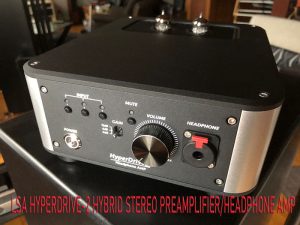
 I’ve been interested in some hands-on time with the LSA HyperDrive 2 Hybrid Stereo preamplifier/headphone amp since its introduction by Walter Liederman’s underwoodhifi.com earlier this year. This handsome “hybrid” unit has a tube buffered input stage and solid-state Class AB output stage, providing up to 2 watts of power into 32ohm headphones. At just 8.5″ wide x 10.5″ deep and 4.2″ high, the HD-2’s smaller size gives its owner placement options. With its CNC machined chassis panels, curved aluminum corner construction, and durable matte black powder-coated finish, the HD-2’s styling is similar to that of the LSA Warp 1 power amplifier, reviewed here last year. The review unit sports the new vented top plate, sporting two buffer circuit tubes protruding.
I’ve been interested in some hands-on time with the LSA HyperDrive 2 Hybrid Stereo preamplifier/headphone amp since its introduction by Walter Liederman’s underwoodhifi.com earlier this year. This handsome “hybrid” unit has a tube buffered input stage and solid-state Class AB output stage, providing up to 2 watts of power into 32ohm headphones. At just 8.5″ wide x 10.5″ deep and 4.2″ high, the HD-2’s smaller size gives its owner placement options. With its CNC machined chassis panels, curved aluminum corner construction, and durable matte black powder-coated finish, the HD-2’s styling is similar to that of the LSA Warp 1 power amplifier, reviewed here last year. The review unit sports the new vented top plate, sporting two buffer circuit tubes protruding.

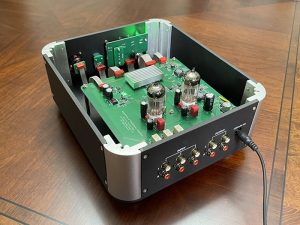
The front of the HD-2 provides three push buttons for source selection and a toggle for three different gain settings (0/6/12dB) for matching any source with the desired output level when used as a preamplifier or headphone amplifier. it has a 1/4” headphone jack with its distinctive red “T” shaped latch that locks in and disengages the phono plug (when pressed), a microprocessor-controlled mute button, and a smoothly rotating (not stepped) Alps volume knob. Its rear panel provides inputs for three unbalanced sources, two pairs of outputs, and an input jack for its external power supply. The review unit had no power cable, so the buyer must provide their own.
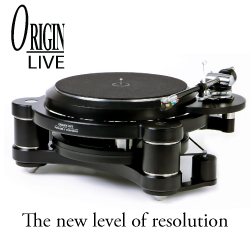 The HyperDrive 2 came very well-packed in a foam bag and secured with thick form-fitting foam blocks, protecting the unit from shipping damage. The foam blocks fit it so snuggly that I had to pull the volume knob out ever slightly from the chassis front for it to rotate freely. Once unpacked and it’s manual opened, I set the HyperDrive 2 up as a preamp with my primary amplifier by adding adapters to the amp’s balanced inputs, converting them to unbalanced for HD-2 use. With my Tekton Double Impacts already connected to the amplifier, I added an Arcam irDAC to the HD—2 and fired things up to begin break-in, feeding the HD-2 audio files from my iMac. The power button lit up blue when the unit powered on – green LEDs for the selected input and the mute button lit also; the mute LED turned off once the unit fully powered up.
The HyperDrive 2 came very well-packed in a foam bag and secured with thick form-fitting foam blocks, protecting the unit from shipping damage. The foam blocks fit it so snuggly that I had to pull the volume knob out ever slightly from the chassis front for it to rotate freely. Once unpacked and it’s manual opened, I set the HyperDrive 2 up as a preamp with my primary amplifier by adding adapters to the amp’s balanced inputs, converting them to unbalanced for HD-2 use. With my Tekton Double Impacts already connected to the amplifier, I added an Arcam irDAC to the HD—2 and fired things up to begin break-in, feeding the HD-2 audio files from my iMac. The power button lit up blue when the unit powered on – green LEDs for the selected input and the mute button lit also; the mute LED turned off once the unit fully powered up.
The HyperDrive 2
The design engineers on the HyperDrive 2 project were Viet Nguyen and Jan Hofland. Mark Schifter, who has led the Underwood DEV TEAM for over a decade, worked with both to birth their concept into physical form. Nguyen brought us the fantastic LSA Discovery Warp 1 power amplifier reviewed in these pages in 2021; he’s also responsible for his own XSA Labs Vanguard Bookshelf loudspeakers, reviewed here. As it happens, I reviewed both, so it seems appropriate for me to tackle the LSA Discovery HyperDrive-2.

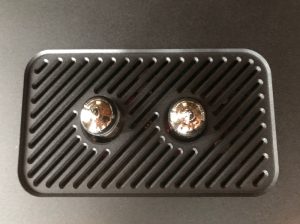
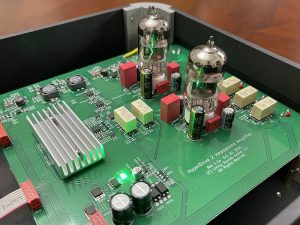
Under its vented hood, the LSA Discover HyperDrive 2 has a state-of-the-art microprocessor-controlled operation for graceful warmup of the tube circuitry, pop-free startup, and shutdown. As it would happen, an underperforming coupling film capacitor caused popping, so I returned the unit for diagnosis and repair. The offending capacitor was replaced, and the unit returned promptly. This popping behavior marked an unusual circumstance, given that Nguyen has four prototypes in his lab that he says have performed flawlessly (Schifter also has one in his home rig). Nguyen said he would have those caps speed up to a higher standard in the next production batch. The review sample performed faithfully and remained pop-free for this review.
 Continuing with the HD-2’s tech and quoting from the underwood.com site (after adding a few hyphens my editing app pointed out), “the [HP-2’s] input stage utilizes a pair of E88CC tubes operating in the ultra-linear range as a Class A cathode follower buffer with a tube-based constant current source (CCS), delivering a natural-sounding preamp that drives its solid-state headphone stage. The output driver stage of the HyperDrive-2 utilizes the class-leading TPA6120A2 monolithic headphone power amplifier from Texas Instruments to cleanly and solidly drive almost any headphone. This buffer/driver topology gives the HyperDrive-2 headphone amplifier a clear and non-fatiguing SE Class A harmonic profile while maintaining a low level of total harmonic distortion in the 0.005% range at average to loud volumes with most headphones.
Continuing with the HD-2’s tech and quoting from the underwood.com site (after adding a few hyphens my editing app pointed out), “the [HP-2’s] input stage utilizes a pair of E88CC tubes operating in the ultra-linear range as a Class A cathode follower buffer with a tube-based constant current source (CCS), delivering a natural-sounding preamp that drives its solid-state headphone stage. The output driver stage of the HyperDrive-2 utilizes the class-leading TPA6120A2 monolithic headphone power amplifier from Texas Instruments to cleanly and solidly drive almost any headphone. This buffer/driver topology gives the HyperDrive-2 headphone amplifier a clear and non-fatiguing SE Class A harmonic profile while maintaining a low level of total harmonic distortion in the 0.005% range at average to loud volumes with most headphones.
“A solid state relay is used to provide DC output protection for your sensitive headphones and adds no distortion to the signal and will never wear out, unlike a mechanical relay.”
The HyperDrive 2’s Development
I reached out to Viet Nguyen with a few questions, and he responded with the following (my only additions were a handful of punctuation marks), “I was given a spec of hitting 2W (watts) into 32 Ohms at the headphone out and had three selectable inputs and two pre outputs. Plus, it had to have a tube stage. Those were my requirements from LSA.
 “I wanted the 2W power with fairly low distortion [and] low output impedance for good bass authority and a single-ended triode Class A harmonic profile. Why 2W? To drive 99% of headphones out there, some are pretty low sensitivity, such as planars from HiFiMan. I wanted to maintain reasonably low total harmonic distortion but have a semi-front-ended Class A sound signature. I also wanted to have solid-state relays for headphone DC protection and muting.
“I wanted the 2W power with fairly low distortion [and] low output impedance for good bass authority and a single-ended triode Class A harmonic profile. Why 2W? To drive 99% of headphones out there, some are pretty low sensitivity, such as planars from HiFiMan. I wanted to maintain reasonably low total harmonic distortion but have a semi-front-ended Class A sound signature. I also wanted to have solid-state relays for headphone DC protection and muting.
“I knew we wanted a Class AB output stage for the low output impedance. Class AB can offer deep bass with a slam. We tried power opamps [operational amplifiers] and made a 5W version. We made 5 working prototypes, each time refining it further.
“We used the TI TPA6120A2 chip, which has some amazing specs as the output buffer. The slew rate in this chip is unmatched in almost any Class AB amp. We designed a custom SET buffer stage to serve as the analog sound processor to impart the SE Class A SET tube characteristic, but we didn’t want it so sweet that it sounded “tubey,” just natural and engaging. We settled on the E88CC tube and topology that we developed. This topology is even better with the NOS Russian 6N1P, which we provide as standard.
“My goal was a THD of about 0.002 to 0.005% at normal listening volumes and a SE Class A profile with dominant second harmonic, slightly less third, and monotonically descending higher orders. We achieved it, and we also achieved a very low background noise goal of about -115 dB.
“The amp has three gain settings via a front toggle to activate 0dB, 6dB, and 12dB via relays. The front panel also has three input selects that activate relays with an SSR-based mute function to prevent clicks and pops during the change. The muting, input selects, gain selects, and on/off sequences are all orchestrated with a microcontroller to ensure graceful activation without pops. The preamp outputs have -6dB gain applied to them, so their gains are -6dB, 0dB, and +6dB (corresponding to the 0dB, 6dB, and 12dB gain switch for the headphone amp) at the RCA’s out.
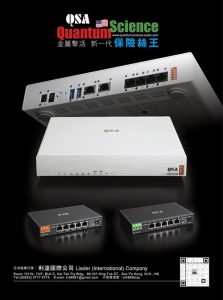 “The external 24v 3A power supply feeds a solid state relay on/off switch and all custom DC-DC converters to generate +/-15v for the opamps and headphone amp rails, 90v B+ for the tube plate, 6.3v for the tube filament and 3.3v for the digital logic.
“The external 24v 3A power supply feeds a solid state relay on/off switch and all custom DC-DC converters to generate +/-15v for the opamps and headphone amp rails, 90v B+ for the tube plate, 6.3v for the tube filament and 3.3v for the digital logic.
“After much testing, listening and tweaking and refinement- we arrived at what you have now in your hands. I think you will find that it sounds transparent, with a bold power and depth of reserve while never sounding cold or sterile or, heaven forbid, “analytical.” It is also absolutely quiet with no music playing. [The HyperDrive 2] will also serve as a fine preamp with the ability to give any basic Class AB or Class D amp just that small amount of SET tube magic.”
Listening with the HP-2 as a Preamplifier
There’s a significant point in break-in where one’s attention is drawn to the music playing. Amanda Whiting’s “Abstraction,” from her 2022 release Lost in Abstraction on Jazzman Records, demanded my attention. The song started simple enough, almost folk-like, but her harp playing and a rush of low frequencies pulled me to the sweet spot. With a boost of the HD-2 volume, soft, sweet strains from her harp, delicate brushes on skins, and soft taps on ride cymbals sealed the deal – this combo headphone amp and preamplifier is no toy!
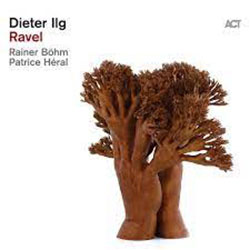 Dieter Iig’s Ravel (2022 ACT Music+Vision GmbH+Co.KG) is a lovely jazz trio outing with touchstones of Maurice Ravel’s well-known classical oeuvre as the catalyst for nuanced interpretation. All the tracks are wonderful, but I’ll peak on one cut in particular, “Adagio assai,” which shows this trio’s telepathy beautifully in sync, as the three performers ebb and flow together as they deliver this well know work. Where they touch on the melody and where they drift away from it works very well, adding just the amount of tension to propel the work to more than a mere cover. The HyperDrive 2 presents the depth and nuance in this work with conviction. Used as a preamplifier, it gets out of the way of the music. It lets it sing and swell, dynamically rendering the heartbeat of Ravel’s works pleasingly and passionately with surprising heft and depth, impressive for a preamplifier I’d label as “surprisingly affordable.”
Dieter Iig’s Ravel (2022 ACT Music+Vision GmbH+Co.KG) is a lovely jazz trio outing with touchstones of Maurice Ravel’s well-known classical oeuvre as the catalyst for nuanced interpretation. All the tracks are wonderful, but I’ll peak on one cut in particular, “Adagio assai,” which shows this trio’s telepathy beautifully in sync, as the three performers ebb and flow together as they deliver this well know work. Where they touch on the melody and where they drift away from it works very well, adding just the amount of tension to propel the work to more than a mere cover. The HyperDrive 2 presents the depth and nuance in this work with conviction. Used as a preamplifier, it gets out of the way of the music. It lets it sing and swell, dynamically rendering the heartbeat of Ravel’s works pleasingly and passionately with surprising heft and depth, impressive for a preamplifier I’d label as “surprisingly affordable.”

Georgia Cécile’s “Bittersweet,” from her 2021 release Only The Lover Sings (2021 Georgia Cécile / Euan Stevenson), has both musical content and emotional depth where you’d swear you’ve heard this song many times before. I searched to confirm that she and her long-time songwriting partner, Euan Stevenson, are its originators (multiple songs with that same title). Through the HD-2, Cécile’s vocals were presented beautifully, with emotive power and nuance.
I’ve been drawn to female vocals while listening through the HyperDrive 2 as a preamp. The HD-2 presents with naturalness, fleshiness, and realism…so much so that, while dictating listening notes and listening, for the first time, vocals were being picked up through the iPad’s dictating function and typing out on screen (as though possessed). I’ve been dictating like this for years, which has NEVER happened. I shared this with Nguyen, who responded, “Wow. The clarity and low noise is what makes it possible. It’s a wonderful preamp. Thanks for sharing.”
 Shirley Horn’s Where Do You Start from 1992’s “Shirley Horn with Strings – Here’s To Life” (Gitanes) formed as a cohesive whole before me; bass felt augmented, and Horn’s voice dominated with its silken depth. Things felt bigger, emboldened with more heft and endowed with greater body. The Bass had a more vibrant punch, and the strings were soft and languishing.
Shirley Horn’s Where Do You Start from 1992’s “Shirley Horn with Strings – Here’s To Life” (Gitanes) formed as a cohesive whole before me; bass felt augmented, and Horn’s voice dominated with its silken depth. Things felt bigger, emboldened with more heft and endowed with greater body. The Bass had a more vibrant punch, and the strings were soft and languishing.
Grounding an External Photo Section with the HyperDrive 2
When necessary, I’ve had pretty good results with grounding a turntable or phono stage to a chassis screw of a line preamplifier or integrated amp without a ground screw. Still, I’d reach out to Nguyen for his thoughts about grounding with the HD-2; his comments follow, “I have tested the HD-2 with the LSA Phono-01 preamp, and it is simply connected to the input on the back. The Phono-01 preamp has a grounding screw on its chassis to connect to the TT ground wire.
“Since the HD-2 is connected to an external power supply via a 2 conductor (non-grounded) plug, it is [thus] grounded. This actually helps keep it from forming ground loops. If you must connect the HD-2 chassis to ground, it can be done by using a small loop-type crimp connector and unscrewing one of the 4 rear panel chassis screws – a 6-32 hex socket cap screw using a 7/64 Allen key. Use that screw to attach the loop-type crimp connector as shown. The chassis is internally grounded to the PCB ground and RCA shield grounds. I verified this.”
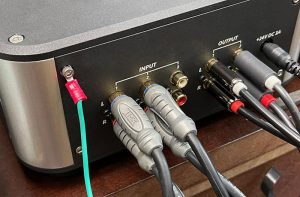
Listening with the HP-2 as a Headphone Amplifier
My Sendy Audio Apollo Planar Magnetic Open Backed open-ear wood headphones have a sensitivity of 95db (+/- 3 dB) and an impedance of 16 Ohm (+/- 15%); it’s an efficient ‘phone. Lee Pardini’s “whatsoever” from 2021’s Homebodies (GroundUP Music) sounded unforced and natural, with a relaxed delivery. The Bass was full and delivered with speed, the mids were provocative, and the rich and highs soft and delicate. The guitar tone was warm, and the sax possessed a sweet, soulful resonance. Skins had a physical presence, as each strike entered with a pronounced punch. The HD-2 did an admirable job of conveying the depth and physicality of the instrumentation. For reference, when I switched the gain to +6DB, I only had to raise the volume to touch under 9:00. At the +12DB setting, I achieved the save relative listening volume at 9:00.
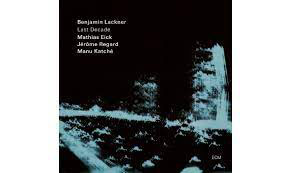 Benjamin Lackner’s “Last Decade” bettered that depth, and the room tone was denser, bringing me closer to being there. Brushes and cymbal work had added resolve, a heightened presence, and more air. Stage depth was deeper through the Sendy Apollo Hybrid Planer headphones at a gain setting of 0DB, which positioned the knob at 10:00. “Pharaoh,” from June Tabor’s 2000’s A Quiet Eye, saw the Creative Jazz Orchestra’s participation prompting the singer to project a bold statement, much bigger than her previous outings. This big band’s music came through both clear and organic; images had greater density and a deeper stage depth. Dynamics had both speed and impact.
Benjamin Lackner’s “Last Decade” bettered that depth, and the room tone was denser, bringing me closer to being there. Brushes and cymbal work had added resolve, a heightened presence, and more air. Stage depth was deeper through the Sendy Apollo Hybrid Planer headphones at a gain setting of 0DB, which positioned the knob at 10:00. “Pharaoh,” from June Tabor’s 2000’s A Quiet Eye, saw the Creative Jazz Orchestra’s participation prompting the singer to project a bold statement, much bigger than her previous outings. This big band’s music came through both clear and organic; images had greater density and a deeper stage depth. Dynamics had both speed and impact.
My 300-Ohm impedance Sennheiser HD 650 requires more juice than the efficient Apollo. At the 0DB gain toggle setting, I had to rotate the knob to 2:00 to achieve the same relative volume. With the gain set in the +6DB position, the volume rode near noon, and with the gain toggle in the +12DB position, the volume appeared comparable at about 10:00 on the dial. I did not notice any substantive degradation in sound quality when listening at any gain settings. The HyperDrive 2 drove the HD 650 effortlessly and quietly.
Re-listening to a few of the songs above through the Sennheiser HD 650’s followed. Whiting’s “Abstraction” sounded open and detailed, offering a great sense of depth and instrument resonance. The presentation was lush and musical, filling the air with energized plucks, expressive skins, sweet cymbals, and realistic low frequencies. Dieter Iig’s “Adagio assai” appeared slightly closed in, and the piano sounded thin, but the HD-2 delivered impressive depth. The percussion was playful, and the rhythm section brought notable energy. The acoustic bass was emotive and dynamic, while the drums were more laid back.
Cécile’s “Bittersweet” was, again, well presented, with wonderful intimacy. Sumptuous strings, surrounded with more air, struck at my heart. The sax was rich and resonant, and Cecile’s vocal came to my ear full of nuance and heartfelt honesty. Horn’s “Where Do You Start” offered an effortless transition from Bittersweet, with the same lush strings present, as each singer sang passionately from the heart.
Final Thoughts
When I reviewed the Sendy Apollo for review, I was taken with its presentation, higher sensitivity, and overall musicality. I’ve been using the Apollo as my daily driver ever since, while my Sennheiser HD 60s have just sat. The HyperDrive 2 has brought new life to my 15-year HD 60s – they now appear more dynamic and responsive, imbued with greater top-end sparkle than before the HD-2 entered the picture. It’s good to have choices! My only gripes with the HyperDrive 2 are its lack of remote and how much of a push it takes to disengage a headphone cable from the phono jack “T” latch… but my case isn’t typical, given arthritis in the bases of both my thumbs. That said, if the HD-2 had a balanced option, it would likely replace my PS Audio Gain Cell.
The LSA HyperDrive-2 Hybrid Stereo Preamplifier/Headphone Amp is an exceptional sounding and toe-tapping hybrid preamplifier and headphone amplifier, whether for its affordable price or despite it. The HD-2’s gain settings may make anyone with hard-to-drive headphones a happy camper. Do reach out to Walter Liederman at underwoodhifi.com and give the HyperDrive 2 a listen.
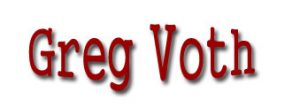

Specifications:
Product reviewed:
The LSA HyperDrive-2 Hybrid Stereo preamplifier/headphone amp $999US
The intro sale is $799US delivered. Two-year warranty with six months on tubes.
Contact:
Walter Liederman
Underwood HiFi
770-667-5633
Specifications:
Input Power
Universal 100v to 240vac 50/60Hz auto-switching external desktop style SMPS
Total harmonic distortion
Preamp:
1.0Vrms output into 47kohm at 1kHz has 0.0021% THD, higher output amplitudes will track similarly to HPA output below as signal from HPA is fed to an opamp buffer to driver the preamp outputs.
Headphone Amp with 33ohm load:
3.8 mW is 0.0036% THD
30 mW is 0.0036% THD
60 mW is 0.0037% THD
293 mW is 0.0055% THD
620 mW is 0.0072% THD
1.7W is 0.011% THD (Max Power)
Intermodulation distortion
N/A
Power Consumption
1.6W (standby – plugged in) and 12.5W (on) measured at 120Vac
Frequency Response
Flat within +/-0.5dB from 10Hz to 22kHz
Gain
0dB, 6dB, 12dB selectable
Noise
Preamp: -115dB noise floor referenced to 1.0Vrms at 0dB for preamp output into 47kohm load
Headphone Amp: -122dB noise floor referenced to 1.0Vrms at 0dB into 33ohms
Maximum Output Sensitivity
1.86Vrms input at 12dB gain setting will produce maximum signal before clipping at the headphone amp output
The preamp outputs have -6dB gain applied to them, and so their gains are -6dB, 0dB, and +6dB (corresponding to the 0dB, 6dB, and 12dB gain switch for the headphone amp) at the RCA’s out.
Maximum Output of the preamp outs is 3.7Vrms for 1.86Vrms input at the 12dB gain setting.
HEADPHONE:
Output Power
1.7 Wrms into 33ohms
Output Impedance
13 ohms (per TI datasheet for TPA6120A2)
Stereo Times Masthead
Publisher/Founder
Clement Perry
Editor
Dave Thomas
Senior Editors
Frank Alles, Mike Girardi, Russell Lichter, Terry London, Moreno Mitchell, Paul Szabady, Bill Wells, Mike Wright, and Stephen Yan,
Current Contributors
David Abramson, Tim Barrall, Dave Allison, Ron Cook, Lewis Dardick, John Hoffman, Dan Secula, Don Shaulis, Greg Simmons, Eric Teh, Greg Voth, Richard Willie, Ed Van Winkle, Rob Dockery, Richard Doron, and Daveed Turek
Site Management Clement Perry
Ad Designer: Martin Perry


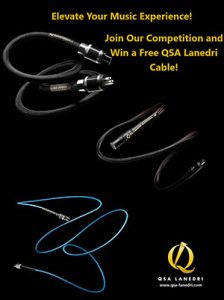



Be the first to comment on: LSA HyperDrive-2 Hybrid Stereo Preamplifier/Headphone Amp by Greg Voth